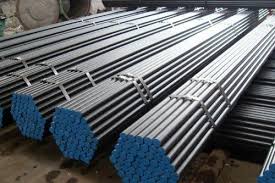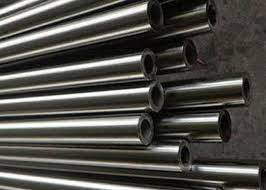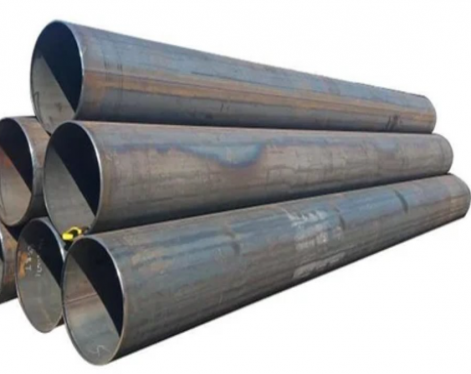1.Boiler Tube Means
Boiler tubes are a piping system designed for use in high temperature and high pressure environments.The main function of boiler tubes is to transport steam or other media, and to withstand the effects of harsh environments such as high temperature, high pressure, and water vapor corrosion. Boiler tubes can be both seamless pipe and ERW tubes, with seamless tubes being more popular due to their higher pressure and temperature resistance. Its specifications are usually expressed in terms of outer diameter or side length and wall thickness, with a wide range of sizes, ranging from capillary tubes with extremely small diameters to large-diameter tubes with diameters of several meters.
Boiler tubes are widely used in industrial boilers, heat exchangers, power stations and other equipment, and are a very important component of these equipment. According to the high temperature performance they withstand, boiler tubes can be divided into general boiler tubes and high-pressure boiler tubes. High-pressure boiler tubes are often exposed to high temperature and high pressure conditions and are required to have high lasting strength, oxidation corrosion resistance and organizational stability.

2.Requirements for Boiler Tube Materials
The materials used for boiler tubes must be carefully selected to meet the following requirements:(1)High temperature resistance and high strength
High-pressure boiler tubes are often exposed to high temperature and high pressure conditions during use. Under the action of high-temperature flue gas and water vapor, the tubes will oxidize and corrode. Steel pipes are required to have high lasting strength, high resistance to oxidation and corrosion, and good structural stability. The working conditions of high-pressure boiler tubes are very harsh. They must work safely for 10 to 20 years, or even longer, under high pressure and high temperature, erosion and corrosion by high-speed airflow, water flow, and gas.
(2)Thermal conductivity
Boiler tubes, especially high-pressure boiler tubes, are pipes used to transport high-temperature and high-pressure steam or hot water and play an important role. In the design and use of high-temperature boiler tubes, thermal conductivity performance is a very critical indicator.
Thermal conduction is the process by which heat is transferred from a high-temperature object to a low-temperature object. In high-temperature boiler tubes, heat conduction occurs mainly through conduction in the tube wall. The heat conduction characteristics of the pipe wall are related to the thermal conductivity of the material, wall thickness, pipe diameter and temperature gradient.

(3) Comply with standards: Materials must comply with safety and quality standards set by regulatory agencies such as ASTM, ASME or EN.
Common ASTM standards for boiler tubes include
ASTM A192/A192M: This is the standard specification for seamless carbon steel boiler tubes for high pressure applications.
ASTM A210/A210M: Covers standards for seamless medium carbon steel boiler tubes and boiler smoke tubes, including safety ends, vault and support tubes, and superheater tubes.
ASTM A213/A213M: Provides specifications for seamless ferritic and austenitic alloy steel boiler, superheater and heat exchanger tubes.
ASTM A335/A335M: Specifies the minimum and nominal wall thickness for seamless ferritic alloy steel boiler tubes suitable for high temperature service.
ASTM A450/A450M: Covers standards for minimum wall thickness, seamless carbon steel boiler and superheater tubes for high pressure applications.
ASTM A178 / ASME SA178 Resistance Welded Carbon Steel Boiler Tube
ASTM A178 Boiler and superheater tubes for electric welding of carbon steel and carbon manganese steel boiler and superheater tubes. ASTM A178 is the same as ASME SA-178 and is a standard specification covering minimum wall thickness resistance welded pipe for boiler tubes, boiler flues, superheater flues, and minimum wall thickness made of carbon steel and carbon manganese steel.
It offers three levels:
Grade A – Mild Steel
Grade C - medium carbon steel
Grade D - carbon manganese steel
ASME Standard Example: ASME SA192 Boiler Tube
SA192 is a material, specifically, it is a standard used for manufacturing high-pressure boiler tubes. This pipe performs well in high-pressure environments due to its excellent tensile strength and yield strength, as well as good elongation, and is able to withstand large pressures and stresses. The chemical composition of SA192 steel pipes is strictly controlled and mainly includes elements such as silicon, manganese, chromium, molybdenum, copper and nickel. The content of these elements has an important impact on the performance and quality of the pipe. In addition, SA192, together with SA-193 and SA-194, is classified as a standard for stainless steel, stainless iron or alloy steel.
3.Common Materials Used for Boiler Tubes
Boiler tubes are usually made of carbon steel, stainless steel and alloy steel tubes. Their differences are shown in the table below.| Attribute | Carbon Steel Boiler Tubes | Stainless Steel Boiler Tubes | Alloy Steel Boiler Tubes |
|---|---|---|---|
| Chemical Composition | Iron and carbon, low carbon content (<0.35%) | At least 10.5% chromium, often with nickel, molybdenum | Iron, carbon, and various alloying elements (e.g., manganese, silicon, chromium, nickel) |
| Mechanical Properties | Lower strength and hardness | Good formability; moderate strength | Higher strength, toughness, and wear resistance |
| Corrosion Resistance | Low; may need coatings or linings | High due to chromium oxide layer | Good to excellent, depending on alloying elements |
| Applications | General-purpose, low to moderate temperature and pressure | Corrosive environments, food processing, chemical industry | High-temperature and high-pressure applications, such as in power stations |
| Cost and Economy | Lower initial cost; may require more maintenance | Higher initial cost; potentially lower lifecycle cost | Varies; can be more expensive due to alloy content |
| Environmental Impact and Sustainability | Regular maintenance may be needed | Recyclable; low maintenance | Varies; some alloys are highly recyclable |
| Lifespan | Shorter lifespan if not properly protected against corrosion | Longer lifespan due to self-healing properties and corrosion resistance | Long lifespan, especially in harsh environments; depends on alloy composition |
4.Boiler Tube Components and Materials Used
| Boiler Component | Function Description | Typical Material Used |
|---|---|---|
| Water Wall Tubes | Main heat-receiving surface around the furnace. | Carbon Steel |
| Convection Tubes | Further heating of fluid in the convection area of the boiler. | Carbon Steel or Alloy Steel |
| Downcomer Tubes | Transport water from the steam drum to the downcomer. | Carbon Steel |
| Header (Collector) | Collects and distributes boiler water; not typically exposed to radiant heat. | Carbon Steel or Stainless Steel |
| Superheater Tubes | Heat saturated steam into superheated steam, improving steam quality. | Alloy Steel |
| Economizer Tubes | Use residual heat from exhaust gases to raise feedwater temperature. | Carbon Steel or Alloy Steel |









